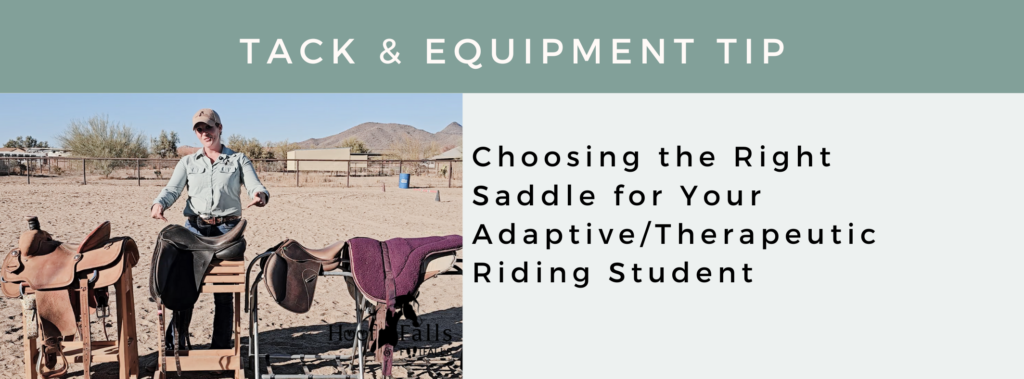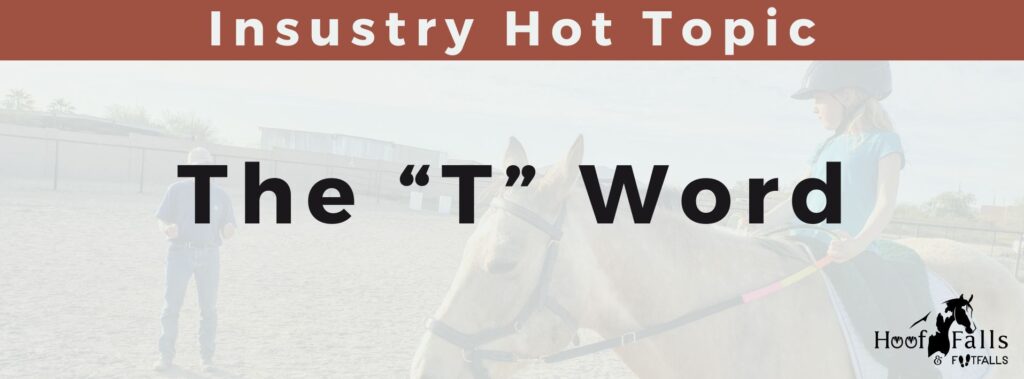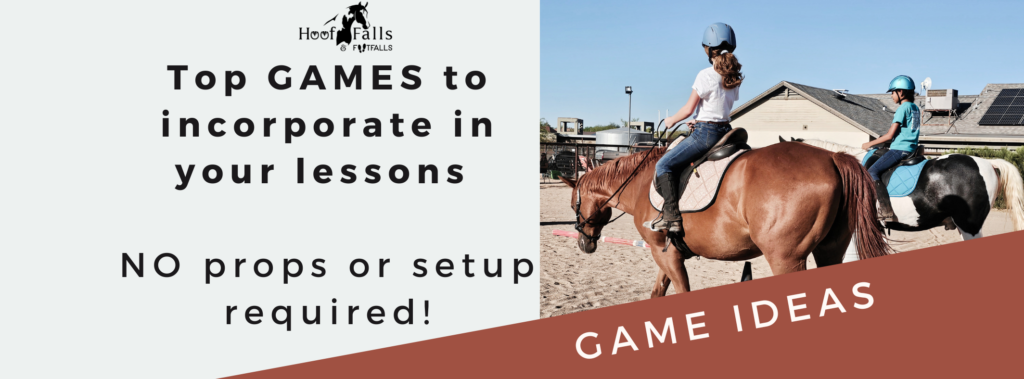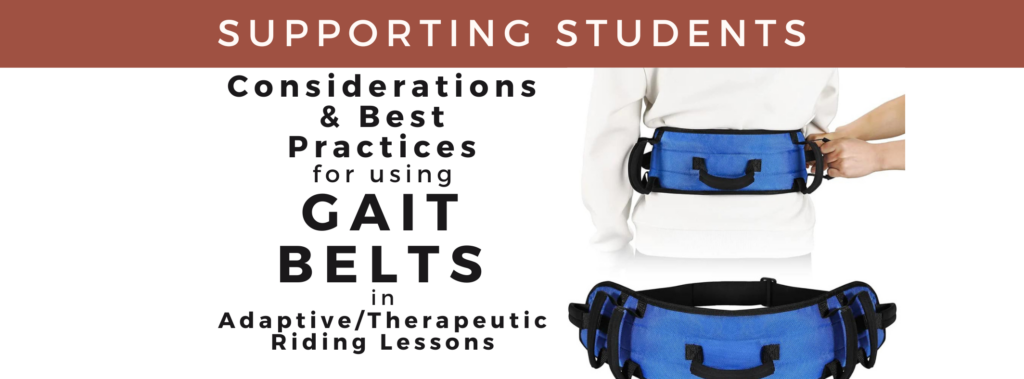
Choosing the Right Saddle for Your Adaptive/Therapeutic Riding Student
As an adaptive/therapeutic horseback riding instructor who works with many other instructors, one of the most common questions I get asked is: “What saddle should I use for my student?” During many thousands of hours in the barn and arena teaching both traditional and adaptive/therapeutic horseback riding lessons, I’ve been honored to work with countless combinations of students, horses, and tack. There is no one-size-fits-all answer, but with the right information, you can make an educated decision that sets your students up for success.
In this post, I’ll break down the considerations you should keep in mind when choosing a saddle for adaptive/therapeutic riding lessons, covering everything from saddle types pros and cons to the importance of proper support and comfort for riders with unique physical, cognitive, and emotional needs.
Do I Need an Adaptive Saddle?
A common question I get from fellow instructors is whether a specialty or adaptive saddle is necessary for students participating in adaptive/therapeutic riding lessons. While there are saddles marketed as “adaptive” or “therapy” saddles (click here to read my blog on why we should not use the word therapy when talking about adaptive/therapeutic riding) and were created from a good place, the reality is that many of these are not safe or ethical to use. Instead, focus on starting with traditional saddles that can be adjusted to meet your students’ needs. I’m talking about well-made saddles that provide proper support and comfort and help riders find a good riding position—no fancy gimmicks required.
As an instructor, our goal is to create a good fit between the saddle, rider, and horse. I’m going to give you an overview of various types of saddles that can work well in adaptive riding programs, focusing on how they support the rider’s physical and emotional abilities.
Traditional Saddles: A Breakdown
I’ve lined up a few common saddles from the most supportive to the least supportive based on how they affect the rider’s position, comfort, and ability to mount and dismount.
Here’s the nuts and bolts about what you need to know about each type :
1. Western Saddles: Most Supportive
Western saddles are typically the most supportive option, especially for riders who have limited stamina, balance, or strength. They might be a good choice for students with lower muscle tone (hypotonia) or those who need extra support due to physical limitations. These saddles offer a lot of stability and can be a game-changer for riders who need extra help staying in position.
- Pros:
- Well built saddles provide extra stability and support.
- Properly hung fenders can provide a bit more friction and aid in keeping legs in appropriate position and limit swinging.
- Swells can give a raised area for riders to use to help rest hands and arms or support the upper body using arms if they have low stamina.
- Cons:
- Usually heavier than other types of saddles.
- The deeper seat may “invite” riders to tip back into a posterior seat.
- Stiff fenders may cause strain or discomfort in ankles, knees, and/or hips.
- Untrained fenders may cause students to loose stirrups.
- Fenders hanging too far forward could cause the rider’s leg to be drawn forward and cause a posterior seat.
- The horn and higher cantle can make it difficult to dismount riders needing support.
2. Australian Saddles: Moderate Support
Australian saddles offer middle ground between Western and Dressage saddles. They provide more support than Dressage saddles but are lighter and more versatile than Western saddles. This makes them a great option for riders who need more support than a Dressage saddle can provide but don’t require the heavy support of a Western saddle.
- Pros:
- Provides good stability and support due to deeper seat, knee pads, and wider stirrup leathers.
- Wider stirrup leathers can provide a bit more stability for the legs.
- Cons:
- Knee pads may make some things like 2-point or posting on a larger moving horse difficult depending on the fit of the saddle to the rider.
- If it has a horn, it may be difficult to dismount riders who need support during the process.
- The deeper seat may “invite” riders to tip back into a posterior seat.
3. Dressage Saddles: Moderate Support
Dressage saddles can vary greatly in the level of support they offer the rider depending on how deep the seat is, size of the thigh blocks, texture of the leather, etc. Dressage saddles may be good for riders who need more support while riding and during mounts and dismounts.
- Key Features: A deeper seat than all- purpose or close contact English saddles, but not as supportive as Western saddles. A well made Dressage saddle’s design helps promote good alignment while riding
- Pros:
- Provides good stability and support due to deeper seat and thigh blocks.
- Does not have horn or swells so can make supported dismounts easier to manage.
- Stirrup length is more adjustable than western and (most) Australian.
- Typically more friendly on lower body joints than some westerns.
- Easier to change out stirrup sizes than western
- Cons:
- Large thigh blocks may make some things like 2-point or posting on a larger moving horse difficult depending on the fit of the saddle to the rider.
- Depending on the leather, the seat and flaps may be quite slick.
- Stirrup leathers do not provide as much stability as a western fender.
- The deeper seat may “invite” riders to tip back into a posterior seat.
4. English Saddles: Less Supportive
English saddles are the least supportive of the traditional saddle options but are often lighter than other styles as well. Watch the YouTube video above to learn the difference between all-purpose and close contact saddles and how the flap angle of english saddles are different than Dressage saddles. English style saddles may be a good choice for riders who need to ride with shorter stirrups due to spasticity in the lower body, limited range of motion in the pelvis, etc.
- Key Features: A flatter seat than dressage, with a more angle in the flaps which can create more of a chair seat position in riders.
- Pros:
- Flatter seat may be more comfortable for some body shapes.
- Flap and ability to shorten stirrups can make it a good choice for those with spasticity in the lower body, limited range of motion in the pelvis, etc.
- Does not have horn or swells and the lowest cantle of all saddles so can make supported dismounts easier to manage.
- Easier to change out stirrup sizes than western
- Cons:
- Shape of seat of some English saddles may not properly support or fit some body shapes well.
- More forward angled flaps and forward stirrup bars can create a chair seat
- Depending on the leather, the seat and flaps may be quite slick.
- Stirrup leathers do not provide as much stability as a western fender.
5. Bareback Pads: Least Supportive
Bareback pads offer minimal support, making them best suited as a progression tool rather than a starting point. Without a saddle tree, they lack the structure to help riders maintain proper rider position, which can often lead to unnecessary tension and slow progression towards rider relaxation and confidence. Due to the lack of tree, the bareback pad also makes the horse feel wider, which can be uncomfortable for certain riders and often leads to a chair seat.
- Key Features: Does not have a tree, quality of “build” varies greatly, often does not stay well placed during rides which can lead to the temptation overtighten.
- Pros:
- Can be a progression tool for some riders (use caution with riders over 50-70 lbs as seat bones will dig into horses back).
- Can be a great way to do gymnastic exercises with some smaller students
- No pommel or cantle may make a supported dismount.
- Cons:
- Does not provide support for rider or horse
- Makes horse feel wider to riders than most saddles
- Often not a good match for beginner and unbalanced riders over 50-70 lbs due to
- Can’t make use of weight bearing positives of stirrups (see safety note below)
SAFETY WARNING: DO NOT USE STIRRUPS ON BAREBACK PADS no matter how small the rider may be and even if the pad has a spot to attach stirrups! Using stirrups with bareback pads is unsafe, as they can cause the pad to rotate on the horse’s back, even with a snug girth, due to the lack of tree. While bareback pads may have their place in a rider’s progression, they are not an ideal starting point, are overused, and can often hinder rider progression.
The Leather Factor: Don’t Forget About Friction
While the type of saddle you choose is important, there are other factors to consider. One key element is leather texture. Some saddles have smooth leather that can feel quite slick, making it harder for riders to maintain their position. This is something to watch out for, especially with students who have sensory processing challenges, autism, ADHD, proprioception challenges, or other conditions that make them sensory seeking or unable to feel where there body is in space. A slippery saddle might create a wiggly tush because it’s fun to slide around on or could cause a rider to struggle with maintaining position due to the lack of feel/feedback between the saddle and their body. Think about sitting on a slick, plastic or metal chair vs. a plastic or metal chair that has a bit of texture….that textrue can make all the difference in being able to stay seated!
To counteract the slippery leather problems, I recommend opting for saddles with a bit of texture or “friction” to help the rider stay in place. If you already have a smooth saddle, you can add a seat saver (available for English, Western, and Dressage saddles — click on saddle style to see seat saver examples) to provide additional texture, sensory input, and comfort. It’s an easy fix that can help a lot with stability and proprioception (that sense of where your body is in space). A couple wraps of vet wrap over the seat could also be a quick fix to provide some texture until you can source a seat saver; just make sure it does not alter the fit of the saddle to the horse.
Final Thoughts: It’s not black and white but a but an educated starting place and a bit of trial and error.
At the end of the day, choosing the right saddle for your adaptive/therapeutic horseback riding students isn’t about finding the “perfect” saddle—it’s about finding what works best for each individual rider and prioritizes the fit and comfort of the equine.
Remember that saddle selection isn’t just about the type of saddle but also how well it’s made. Look for well-constructed saddles that can help your students maintain a good riding position instead of creating a situation where the student is fighting against their equipment. And, as always, keep in mind that small adaptations to traditional tack, like seat savers, can make a world of difference in how well the saddle works for your student
A quick reminder:
- Horse Fit: The saddle must fit the equine first and foremost….then we work within those boundaries to match a student:
- Student Fit: Comes secondary to the fit of the equine. If a student does not fit in the saddle(s) that fit the horse’s they are able to ride, then they should not participate in mounted activities at that time. If possible, offer them suitable unmounted horsemanship lessons to build their horsemanship skills from the ground up (which should be the starting point for most, if not all of our students no matter their ability!). Click the following link to learn why Unmounted Lessons are a Powerful Asset for Your Riding Program
- Bareback Pads are not always the answer: Avoid the temptation of having bareback pads be the way to “solve” the issue of not having a saddle that fits the rider that also fits the horse you want to put them on. Seat bones digging into our equine’s backs is not a solution and bareback pads should be a progression, not a starting point for most riders.
More in-depth videos with guidance on tack, equipment, and common ways to adapt traditional tack can be found in the Tack & Equipment Considerations section of The Intuitive Instructor Club video library where we dive deeper into saddle fitting, rider positioning, and matching the right tack to your students’ needs.
You are currently on Hoof Falls & Footfalls’ learning platform. Return to our main website HERE.
Hoof Falls & Footfalls is supported by YOU! Each time you buy through affiliate links from my site, I may earn commission (at no extra cost to you). Commissions help me continue to provide free and affordable education to adaptive/therapeutic riding instructors and other Equine Assisted Services industry professionals.
Disclaimer: The information provided by Hoof Falls & Footfalls is for educational purposes only and is intended to support instructors in expanding their knowledge and skills. It is not a substitute for professional training, certification, or individual judgment. By choosing to implement any of the ideas, techniques, or practices shared here, you do so at your own risk and accept full responsibility for the outcomes. Hoof Falls & Footfalls and its creator, Saebra, assume no liability for any injuries, damages, or losses resulting from the use of the information provided. Always ensure the safety and well-being of your students, horses, and yourself by following appropriate safety guidelines and industry best practices.







Responses